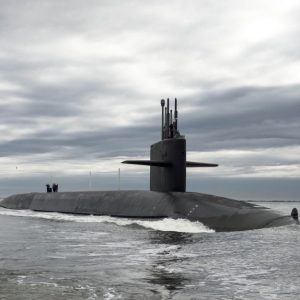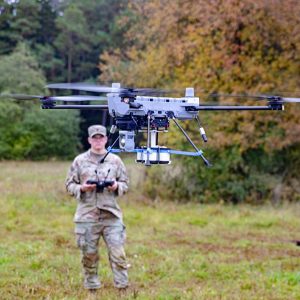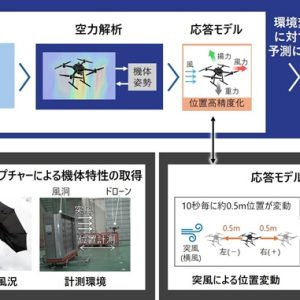Completion of All Tests for MALAMAN Smart Naval Mine marks a significant achievement in the maritime defense industry. This next-generation technology, which offers increased precision, adaptability, and operational effectiveness, is revolutionizing underwater warfare. These highly sophisticated smart naval mines have undergone rigorous testing to ensure their readiness for deployment, guaranteeing optimal performance under various challenging conditions. The finalization of testing reflects the industry’s commitment to modernizing maritime defense strategies and maintaining naval superiority in ever-evolving tactical environments.

Introduction: The Role of Naval Mines in Modern Warfare
Naval mines have long played a strategic role in maritime warfare. Traditionally, they have been used as deterrents or direct threats to enemy vessels. Their ability to block critical waterways, protect strategic areas, and limit the mobility of opposing naval forces has made them a valuable asset in any nation’s maritime defense arsenal.
However, with the advancement of naval technology, modern naval mines are no longer just passive tools. They have evolved into dynamic, smart naval systems that can make tactical decisions in real time. This evolution enables modern navies to integrate naval mines into broader military strategies, making them essential components in the modern defense infrastructure.
Development of MALAMAN Smart Naval Mine: A New Era in Underwater Warfare
The development of smart naval mines represents a pivotal shift in underwater warfare. Traditional mines were static, indiscriminate, and often posed long-term risks, even to friendly vessels. In contrast, smart naval mines are designed with precision targeting capabilities, advanced sensory technology, and enhanced operational autonomy.
Smart naval mines can now distinguish between different types of vessels, including warships, submarines, and commercial ships. They can track, follow, and target enemy ships, responding only to specific threats. These intelligent mines also can lay dormant for extended periods, activating only when a defined target profile is detected. The transition from passive to active control of naval mines allows for a more controlled and precise application of force.
Testing and Validation: Ensuring Operational Efficiency
The development of advanced technologies in naval warfare requires stringent testing. Ensuring the functionality, reliability, and tactical efficacy of MALAMAN Smart Naval Mine necessitates a comprehensive series of underwater tests under various operational conditions.
During the testing phase, several critical aspects were evaluated:
- Sensitivity and Discrimination: Testing involved determining the mine’s ability to discriminate between friend and foe, ensuring that only intended targets would trigger the mine.
- Environmental Adaptability: Tests were conducted in different marine environments, including shallow waters, deep oceans, and turbulent currents. The ability of the smart mine to adapt to environmental challenges is essential for its operational success.
- Autonomy and Decision-Making: One of the defining characteristics of smart naval mines is their ability to operate autonomously. Extensive testing was carried out to evaluate their capacity to make independent tactical decisions, such as target acquisition and detonation timing, based on real-time data.
- Longevity and Maintenance: Modern naval mines must be capable of extended deployment, often for years, without maintenance. The mines underwent durability tests to verify their endurance against corrosion, pressure, and other marine factors.
By the conclusion of these tests, the smart naval mines demonstrated their readiness for deployment in strategic maritime zones.
Technological Advancements in Smart Naval Mines
Smart mines incorporate cutting-edge technologies that allow them to interact with their environment in ways that were previously unimaginable. Key innovations include:
- Multi-Sensory Detection Systems: Modern smart mines use a variety of sensors, such as acoustic, magnetic, and pressure sensors, to detect and classify vessels. This multi-layered approach ensures that mines are only triggered by appropriate targets, thus reducing collateral damage.
- Artificial Intelligence (AI) Algorithms: Smart naval mines leverage AI to analyze data, identify potential threats, and make autonomous decisions. These algorithms are continuously improved to enhance accuracy, speed, and efficiency.
- Stealth Technology: Modern mines incorporate stealth features that make them difficult to detect and neutralize. This includes low-frequency emission designs, minimizing their acoustic signature to avoid detection by anti-mine systems.
Impact on Naval Strategy and Defense Tactics
The introduction of MALAMAN Smart Naval Mine has reshaped modern naval strategies. Navies can now deploy mines not only for offensive operations but also as part of a broader defensive strategy to protect critical maritime assets, such as ports, oil platforms, and shipping lanes.
Smart naval mines provide multiple tactical advantages:
- Asymmetric Warfare: Smart mines allow smaller navies to level the playing field against larger, more technologically advanced naval forces. Their cost-effectiveness and ability to disrupt enemy operations make them ideal tools for nations facing superior naval threats.
- Deterrence: The mere presence of smart naval mines in strategic waters serves as a powerful deterrent. Potential adversaries are forced to rethink their strategies, knowing that any misstep could result in severe damage to their fleet.
- Area Denial and Control: Naval mines are essential tools in area denial operations. By deploying mines in key waterways or near enemy bases, navies can prevent enemy forces from entering or controlling strategic maritime zones.
- Coordinated Defense Systems: Smart mines can be integrated into broader naval defense systems, working in conjunction with other maritime assets like sonar arrays, surface ships, and submarines. This creates a more comprehensive defense grid, capable of addressing multiple threats simultaneously.
Smart Mines and Anti-Mine Countermeasures: The Ongoing Arms Race
As smart mines evolve, so do anti-mine countermeasures. The ability of naval forces to detect and neutralize mines is paramount to maintaining dominance at sea. This has led to an ongoing arms race between mine developers and anti-mine defense specialists.
- Mine Countermeasure Vessels (MCMVs): These specialized ships are designed to detect and destroy naval mines using advanced sonar and remotely operated vehicles (ROVs). They play a crucial role in maintaining the safety of key maritime routes.
- Unmanned Underwater Vehicles (UUVs): UUVs are now commonly used in mine detection and neutralization missions. Their autonomous capabilities allow them to safely navigate minefields and engage threats without risking human lives.
- Advanced Sonar Systems: Anti-mine sonar technology has seen rapid advancements, allowing for the early detection of stealthy mines. These systems are designed to penetrate difficult environments such as murky waters and complex seafloors.
Despite these advancements, smart mines remain a formidable challenge for countermeasure systems due to their stealth and adaptive capabilities.
Future Trends in Naval Mine Warfare
The future of naval mine warfare is set to be shaped by several technological trends, including the increased use of automation, AI, and networking technologies.
- Networked Minefields: One significant development is the concept of networked minefields, where individual mines are interconnected to share data and coordinate actions. This would allow for more complex strategies, such as coordinated strikes or adaptive reconfiguration of the minefield.
- AI-Enhanced Mines: Future smart mines will have more sophisticated AI, capable of making even more advanced tactical decisions based on real-time data from various sources. This will further reduce the risk of collateral damage and increase the overall effectiveness of these weapons.
- Multi-Role Mines: The trend toward multi-role systems in the defense industry is likely to influence naval mine design as well. Future mines may be equipped with additional functionalities, such as data collection, surveillance, or even offensive countermeasures against enemy submarines and drones.
Ethical and Legal Implications
As with all advancements in military technology, the use of smart naval mines raises ethical and legal questions. Unlike traditional mines, smart naval mines can make independent decisions, which brings into question the extent of human oversight in their deployment.
Furthermore, the potential for unintended harm to civilian vessels or non-combatants remains a concern, especially in densely trafficked maritime regions. International laws, such as the United Nations Convention on the Law of the Sea (UNCLOS), provide frameworks for the use of mines. Still, the advent of autonomous smart mines may necessitate new regulations.
Nations must balance leveraging the benefits of smart naval mines and ensuring compliance with international humanitarian laws.
Conclusion: The Strategic Importance of Smart Naval Mines
The completion of testing for smart naval mines marks a critical milestone in modern maritime defense. Their ability to combine autonomy, precision, and adaptability makes them indispensable tools for any navy aiming to maintain maritime superiority. As naval warfare continues to evolve, smart naval mines will play a pivotal role in shaping the future of underwater combat.











